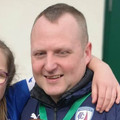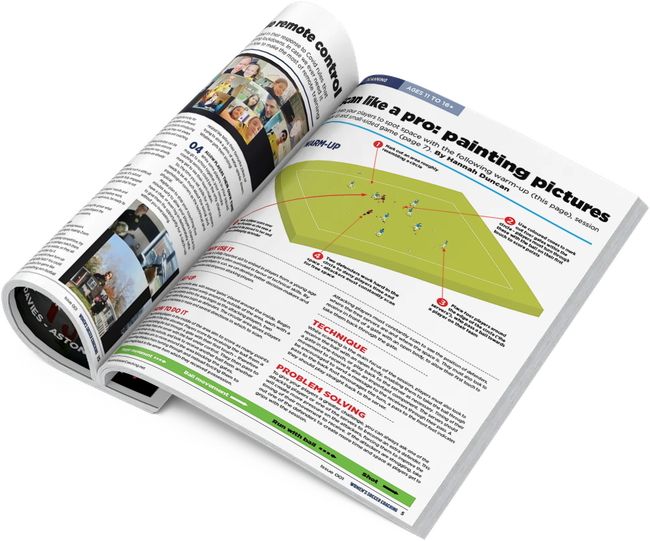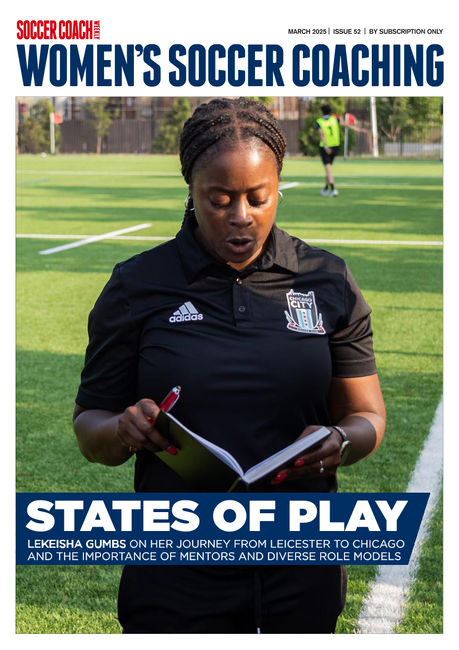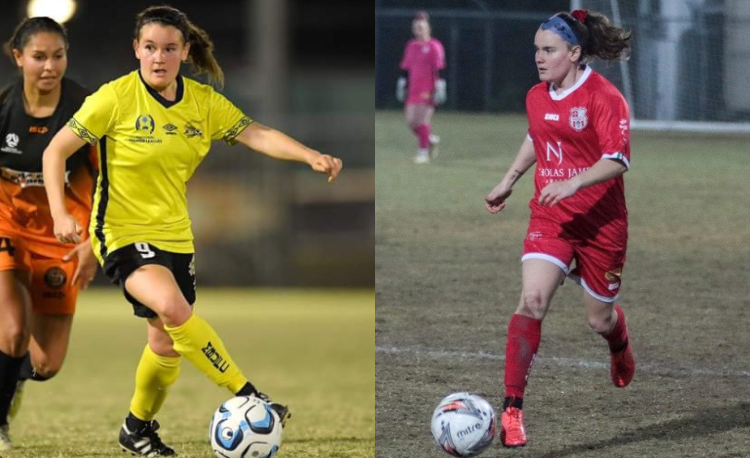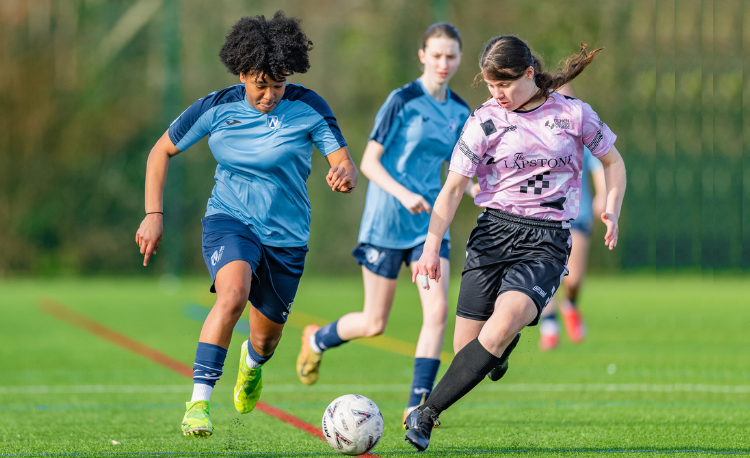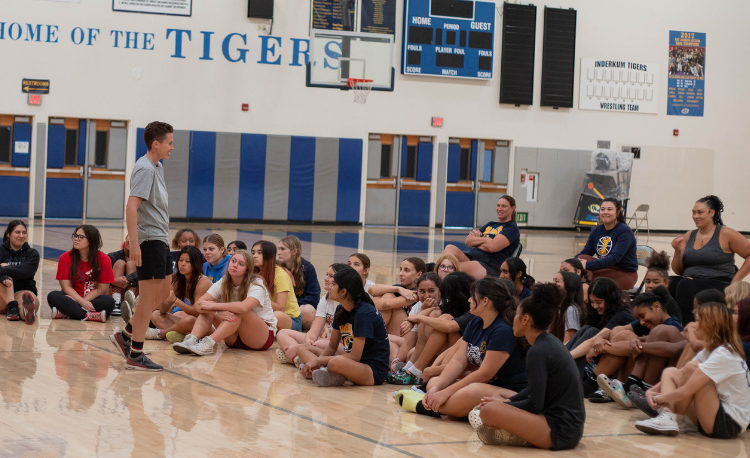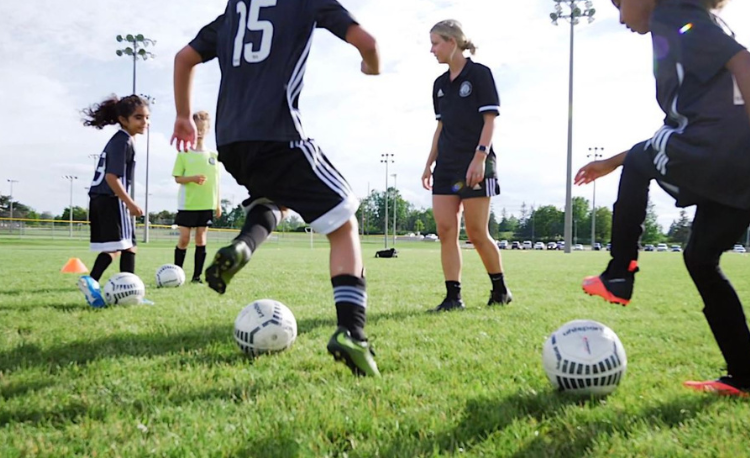You are viewing
1 of your 3 free articles
Goals are for setting, not just for scoring
Coaching Adviceby Jon Cotterill-Bolsover
Players know what they want to achieve but often not how to get there. Jon Cotterill-Bolsover says reframing their dreams can help to realise them
As I sit down at my laptop, video conference at the ready for another Thursday evening with my under-15s squad, the thought crosses my mind: ‘What do I talk about tonight?’.
This must be a scenario mirrored across the game, with fitness sessions exhausted, tactical talk presentations used up, the team quiz getting a little outdated.
But this particular Thursday I asked one question that opened up a debate and revealed more about my players than perhaps I had ever considered. The question was simply: ‘What are your goals?’.
Goal-setting seems such an easy process – in the UK, players want to play for England, get a scholarship to the US or play in the WSL, and similar ambitions are held by others across the globe.
But what often surprises me is the lack of insight into the bits in between, the route to these goals. Knowing the various factors in goal-setting is key to using goals in the correct way.
This must be a scenario mirrored across the game, with fitness sessions exhausted, tactical talk presentations used up, the team quiz getting a little outdated.
But this particular Thursday I asked one question that opened up a debate and revealed more about my players than perhaps I had ever considered. The question was simply: ‘What are your goals?’.
Goal-setting seems such an easy process – in the UK, players want to play for England, get a scholarship to the US or play in the WSL, and similar ambitions are held by others across the globe.
But what often surprises me is the lack of insight into the bits in between, the route to these goals. Knowing the various factors in goal-setting is key to using goals in the correct way.

#SquadGoals: Jon Cotterill-Bolsover is head of performance and analysis for Chesterfield Women (Picture: Tina Jenner)
Controllable goals
I see many examples of what could be considered ‘uncontrollable goals’, such as scoring more goals, saving more shots, winning more trophies.
But what IS in our control? Time and effort on the training ground, working on shot accuracy, increasing your workrate on the pitch – these are all things the individual can control.
"Work backwards, using a 'If I want to achieve X, then I must do Y' system..."This reframing of the vision brings a different perspective to goal setting, changing ‘I want to score more goals’ to ‘I want to improve my shot accuracy’ or ‘I want to give myself more time to work on the power in my shots’.
Far too often I see players upset that their goals were not achieved – ‘I wanted to score more goals than last season and failed’ is a conversation I have had many a time.
But in truth, there is no failure, only a misunderstanding of setting controllable goals.
Reverse engineering
Breaking goals down is the best way to understand what it is we are trying to achieve and what we have to do to get there.
Reverse engineering is a great way to do this – looking at the final goal and working backwards, on a reverse journey from the bigger picture to the present day. Working the other way runs the risk of creating too many open pathways.
It is sometimes very difficult to picture this without actually giving it a try, so let’s use an example.
I want to play at international level – how do I get there? Let’s start at the very top and work backwards using a ‘if I want to achieve X…’ ‘then I must Y…’ system (see next page).
A player who dreams of playing for their country must play at a high level. To do that, they must work hard in training. To do that, they must find opportunities to enhance their training, like turning up earlier and staying later. To do that, they must measure where they are at and set targets to improve.
Although a very simplified version, this process allows us to see the future as we want it, before working backwards to the present day and ultimately end on a note of action that can be taken today.
If we choose not to do this and instead work forward, the pathway may look very different. For instance: 'If I play well, higher level teams will want me, If I work hard and play at a higher level then I will get a bigger chance of playing international football’.
The problem with this approach is that we are limited with our here and now and presume a starting point. Working in reverse keeps us in the present and helps us deal with the problems and setbacks as we see them today.
There is no limit to working in reverse, taking us further down paths such as strength and conditioning, nutrition and personal behaviours, to name a few.
"IF I WANT TO...THEN I MUST..." - THE REVERSE ENGINEERING OF GOAL SETTING
IF I WANT TO: Win an international call-up...
…THEN I MUST: Play at a high level. IF I WANT TO: Play at a high level...
…THEN I MUST: Work hard in training. IF I WANT TO: Work hard in training...
…THEN I MUST: Find opportunities to enhance my training IF I WANT TO: Find opportunities to enhance my training...
…THEN I MUST: Measure where I am and improve IF I WANT TO: Measure where I am and improve...
…THEN I MUST: Test a range of my abilities and set targets to improve areas
Related Files
WSC-005-goals-are-for-setting-not-just-for-scoring.pdfPDF, 479 KB
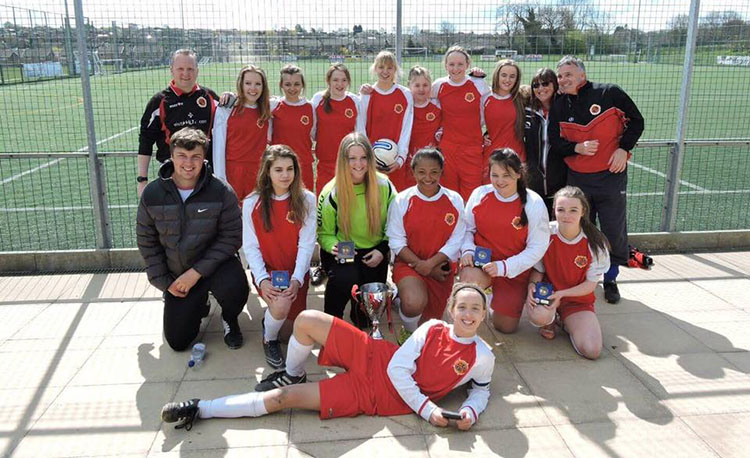
Jon Cotterill-Bolsover (top left) coached Worsbrough Bridge Athletic U15s - and Esme Morgan, now of Man City (clutching the ball)
Measurable targets
The concept of SMART targets seem to have been around for a long time, at least since my work in training and education in the mid 1990s.
The acronym of Specific, Measurable, Attainable, Relevant and Timebound does seem to be timeless in its essence, but one aspect I have long held in higher esteem than the others is the Measurable element.
In truth, I am a scientist at heart. The longing to measure everything in numbers and figures is the analyst in me, the yearn to record everything is the scientist in me and the desire to find opportunities for progression is the strength and conditioning coach in me.
All jokes aside, measuring where we are now and setting measurable goals as to where we want to be is the only true way of knowing whether what we are doing is working. The rest is good guesswork.
Where I find all this most relevant is in the mentoring of young players who have a commitment to progress themselves.
Speaking to a 17-year-old who is about to take her first steps across the Atlantic to take up a US scholarship and is in need of a preparation programme to get ‘fitter and stronger’ is very common for me personally.
"Setting measurable goals is the only way of knowing if what we are doing is working"When given this brief, I often reply with the question: 'Where are you now and where do you want to get to?’, a question that is seldom answered with any sense of true understanding.
The fact is that if we are to progress in any area, then we must know exactly where we are and set goals to improve that – and that needs to be measurable and measured.
Let's use the example of getting faster. In its most basic sense, all too often we rely on the feeling that if we work harder then we will get faster, but we do not know this to be the case. However, measuring and testing speed is pretty easy to do with the minimum amount of equipment.
At its most basic level, testing the time we sprint between two trees before embarking on a speed programme and then re-testing to see if things have improved in that timeframe is still a very good indication of improvement, plateau or decline.
For those that enjoy this side of training, testing techniques complete with full instructions are out there in their hundreds.
By measuring our position and subsequent progression, this brings us back to our primary objective of goal-setting. Using numbers and data to set targets will ultimately push us towards our goals.
The complexity of the testing and measuring you do either as a player or coach is entirely a personal choice, but consistency and quality should not be. The only true way of measuring progression is to ensure you are consistent with everything you do.
Goal-setting is natural to some and not to others, but as I watch junior players become development players and development players eventually become senior players, I take delight in knowing that I have played some small part in that progression.
Perhaps the greatest achievements by coaches are not producing amazing players, but by playing a part in creating an independent-thinking problem-solver - one who knows how to create a pathway and how to react appropriately to the setbacks and challenges our beautiful game throws at us.
It is certainly a goal worth striving for.
WSC
Newsletter Sign Up
Newsletter Sign Up
Discover the simple way to become a more effective, more successful soccer coach
In a recent survey 89% of subscribers said Women's Soccer Coaching makes them more confident, 91% said Women's Soccer Coaching makes them a more effective coach and 93% said Women's Soccer Coaching makes them more inspired.
*includes 3 coaching manuals
Get Inspired
All the latest techniques and approaches
Women's Soccer Coaching offers proven and easy to use soccer drills, coaching sessions, practice plans, small-sided games, warm-ups, training tips and advice.
We've been at the cutting edge of soccer coaching since we launched Soccer Coach Weekly in 2007, creating resources for the grassroots youth coach, following best practice from around the world and insights from the professional game.
